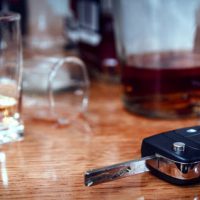5 Types Of Evidence Proving The Other Driver Was Drunk

Following an accident believed to be caused by a drunk driver, it may not always be easy to prove that the other driver was actually under the influence of alcohol. Of course, if the driver is charged with DUI after the accident, it would help prove that they were drunk and establish their fault. But what other types of evidence can you use?
Fortunately, there are several pieces of evidence that can be used to prove that the other party was indeed under the influence. If you or your loved one was involved in a DUI accident, contact our Birmingham drunk driving accident attorneys at Goldasich, Vick & Fulk. Our attorneys can help you build a strong case to hold the other driver accountable and ensure that you receive the compensation you deserve.
Evidence That Helps Prove the Other Driver Was Drunk
These five types of evidence can provide strong proof and help you receive just compensation for your injuries. Let’s take a look at each type and how it can be used in these cases:
- Police report. The police report from the accident contains crucial information that could be used as evidence in court, such as statements from witnesses, chemical tests, and the officer’s personal observations of the scene. This document is essential because it proves that law enforcement responded to the incident and recorded all of their findings.
- Breathalyzer or blood tests. While conducting their investigation, officers may use a breathalyzer or request blood tests to determine if the other driver was legally intoxicated. If these tests come back positive, they will serve as powerful evidence that can be used in court. In Alabama, it is illegal to operate a vehicle with blood alcohol concentration (BAC) of .08% or higher (Alabama Code § 32-5A-191).
- Witness statements. Witnesses who observed what occurred during and immediately after the accident can provide valuable testimony regarding who was responsible for causing it and whether the other driver was drunk. They may have seen signs of impairment, such as erratic driving behavior, slurred speech, or unsteady balance which could be useful in proving that intoxication contributed to the crash.
- Testimony by accident reconstruction experts. An accident reconstruction expert has specialized training and experience investigating car accidents and determining how they occur. Their testimony is critical for establishing fault when both parties disagree about what happened or when there isn’t enough evidence from other sources to make a definitive ruling.
- Photographs. Photographs taken at the scene of an accident can capture important details such as skid marks, damage done to vehicles, and any obstacles that may have contributed to what happened. These images are important for demonstrating how events unfolded leading up to the collision and who should be held accountable for it. Obviously, if there were open containers of alcohol in the other driver’s vehicle and you have photos to demonstrate it, they can be used as evidence as well.
The five types of evidence outlined above are all powerful tools for making your case in court to ensure that you receive just compensation for your losses due to someone else’s negligence.
Start Building Your Case with an Attorney Today
In order to hold a drunk driver liable for his/her actions, you must have strong proof that they were impaired at the time of an accident. It is important to contact a personal injury lawyer right away following an auto accident if you feel like you need assistance with gathering this kind of evidence or pursuing legal action against a drunk driver who caused harm to you or your property. Goldasich, Vick & Fulk, Attorneys at Law, can help you build a strong case and fight for the compensation to which you are entitled. Call 205-731-2566 today to get a case review.
